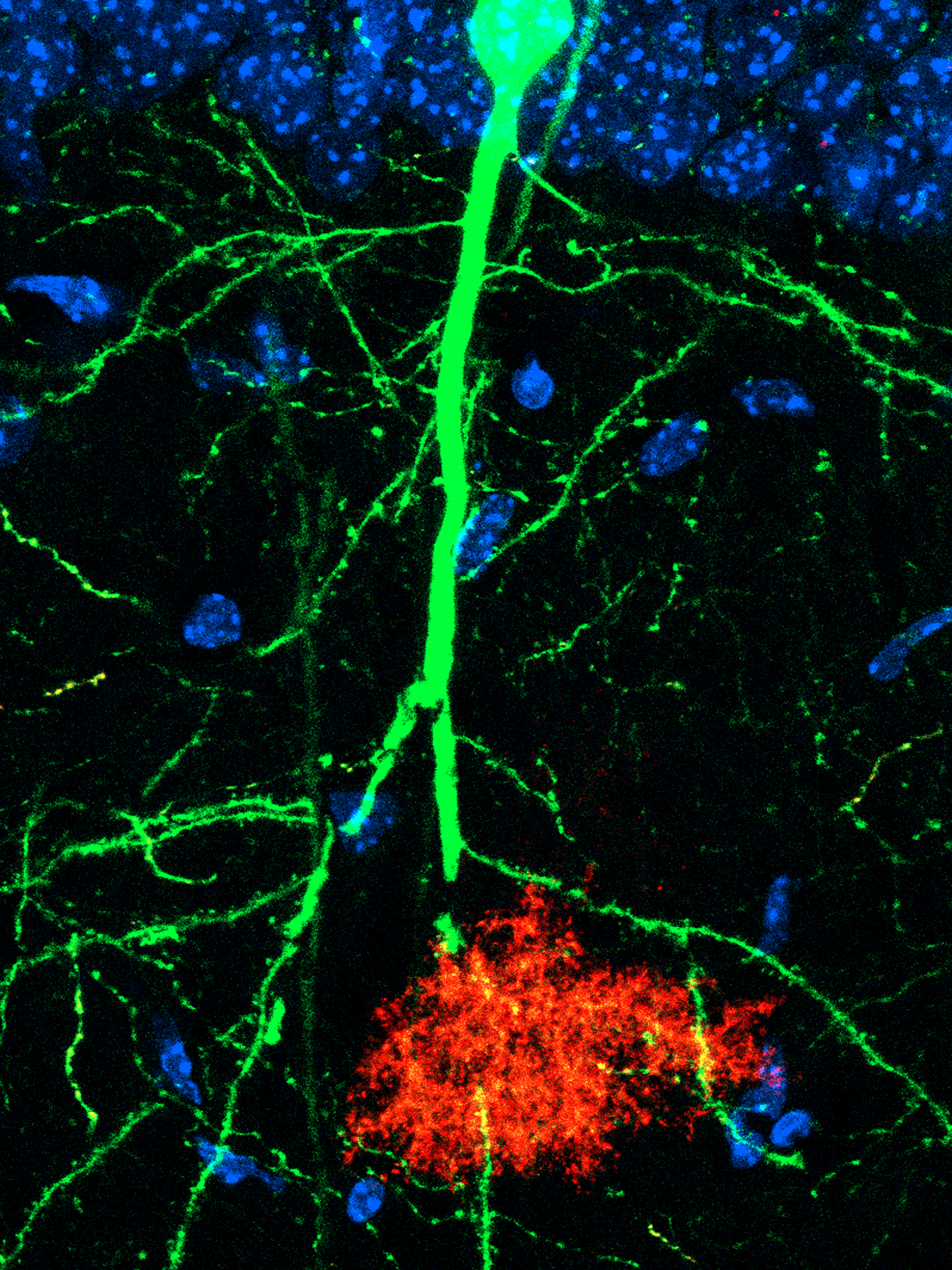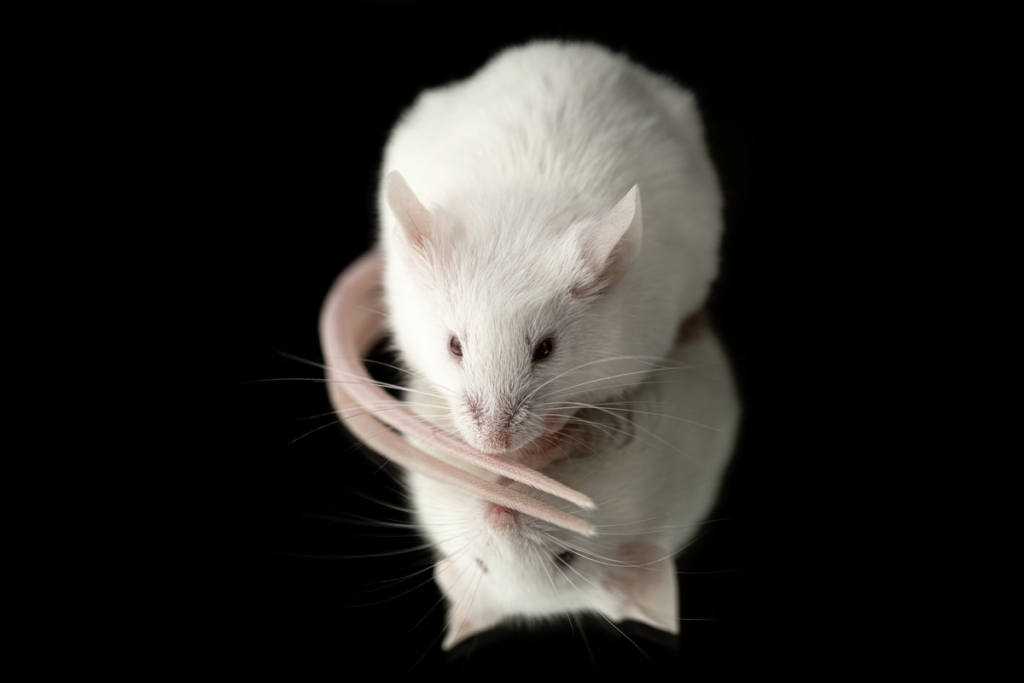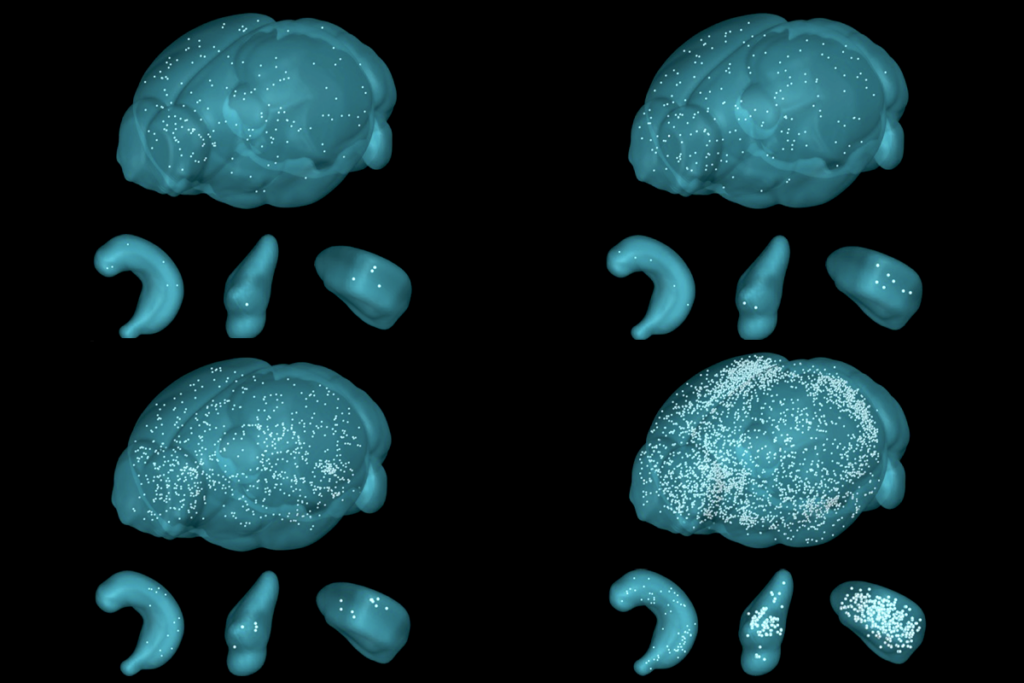Engrams, the physical circuits of individual memories, consist of more than just neurons, according to a new study published today in Nature. Astrocytes, too, shape how some memories are stored and retrieved, the work shows.
The results represent “a fundamental change” in how the neuroscience field should think about indexing memories, says lead researcher Benjamin Deneen, professor of neurosurgery at Baylor College of Medicine. “We need to reconsider the cellular, physical basis of how we store memories.”
When mice form a new memory, a specific set of neurons becomes active and expresses the immediate early gene c-FOS, past work has found. Reactivating that ensemble of neurons, the engram, causes the mice to recall that memory.
Interactions between neurons and astrocytes are critical for the formation of long-term memory, according to a spatial transcriptomics study from February, and both astrocytes and oligodendrocytes are involved in memory formation, other work has shown. Yet engram studies have largely ignored the activity of non-neuronal cells, says Sheena Josselyn, senior scientist at the Hospital for Sick Children, who was not involved in the new study.
But astrocytes are also active alongside neurons as memories are formed and recalled, and disrupting the star-shaped cells’ function interferes with these processes, the new work reveals.
The study does not dethrone neurons as the lead engram stars, according to Josselyn. “It really shows that, yes, neurons are important. But there are also other players that we’re just beginning to understand the importance of,” she says. “It’ll help broaden our focus.”
M
ice learn to fear an environment in which they experience repeated mild foot shocks. An hour and a half after this conditioning, 2 to 3 percent of astrocytes in the hippocampus express c-FOS, Deneen and his colleagues found. Knocking out c-FOS in those astrocytes weakened their ability to strengthen synapses in response to learning and impaired the animals’ memory recall on a fear-conditioning task.The findings suggest that, as in neurons, c-FOS plays an important role in the activity of astrocytes in the hippocampus, says Yongjie Yang, professor of neuroscience at Tufts University, who was not involved in the work. “Previous studies have shown that c-FOS can be expressed in glial cells, but no one has really paid close attention to ‘what does it mean?’ and ‘what is the function consequence?’”
Further experiments revealed that, over the course of the fear-conditioning experiment, 10 to 20 percent of astrocytes in the CA1 and dentate gyrus of the hippocampus become labeled positive for c-FOS expression. These “learning-associated astrocytes,” as Deneen and his colleagues termed them, are surrounded by engram-specific neuronal synapses. And activating these astrocytes by way of chemogenetics increased the activity of the engram neurons. “There’s this really close relationship between these cells,” Deneen says.
Fear-conditioned mice tend to freeze when reintroduced to the chamber where they experienced foot shocks. But the mice also froze in a neutral setting—one in which they had never been shocked—when Deneen and his colleagues reactivated the learning-associated astrocytes, suggesting that the team could replay the fear memory through the astrocyte’s activity alone. Activating other astrocytes that were not linked to the fear memory had no effect on the animals’ behavior.
Learning-associated astrocytes upregulate nuclear factor I-A (NFIA), which is known to be critical for hippocampal circuit function, the team found using RNA-sequencing. Knocking out NFIA in these cells prevented mice from recalling their fear memory. But the animals could still recall the fear memory if the neuronal engram was directly activated, they discovered. “The neuron is still really important,” Deneen says.
The astrocytes may serve as a marker for specific memories, Josselyn says. “It seems like it’s this pointing device that says, ‘Look here for the engram.’”
S
till, a number of questions remain. For one, the study knocked out c-FOS in astrocytes before the mice learned to associate a chamber with foot shocks, Yang points out. That makes it unclear whether the lack of c-FOS was directly responsible for impaired memory or whether the change impaired the astrocytes in other ways. “This may not be a specific behavior induced by [lack of] c-FOS,” he says. “It could be just a general homeostatic change.”Moving forward, it would be interesting to explore how c-FOS expression relates to the expression of NFIA, Yang says. “It would be good to connect all these different things to see, downstream, what happens in all these different paradigms that could be either contributing to this neuronal plasticity or behavior.”
Future work could also explore whether these non-neuronal cells store memory information or just highlight the location of specific engrams, whether they activate in response to other forms of memory, and how widespread they are throughout the brain, Josselyn says.
The team already plans to look into some of that, including whether this relationship between learning-associated astrocytes and the engram holds up beyond the hippocampus, Deneen says. “We know that neuronal engrams are present in the amygdala, prefrontal cortex and all over the brain,” Deneen says. “Is there an astrocyte engram there? And if there is, is it really important for function or not?”





